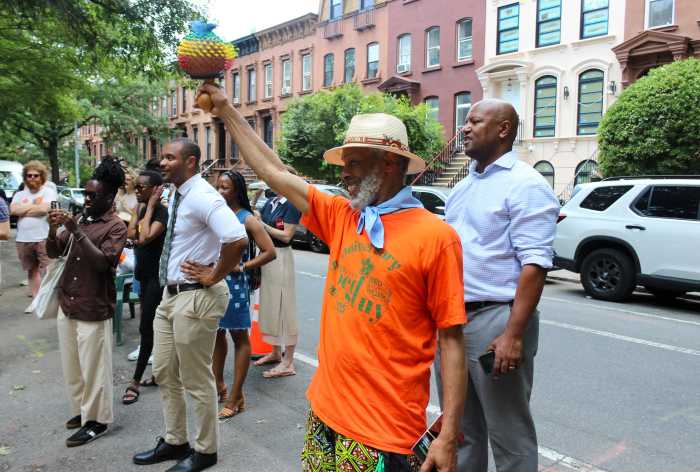Everyone’s in a rush, the world is moving, time’s a concept shared to the millisecond on the clocks of a million simultaneously operating cell phones. You tell someone you’ll meet them at the movies at 7:40, or you’re planning to catch the 1:06 New Lots Avenue-bound 3. The walk from your apartment to a friend’s takes exactly 14 minutes, this you know.
But depending on which way you approach the old Williamsburgh Savings Bank tower, you might be a couple minutes in the past. Look down at your carefully calibrated digital watch/phone/Fitbit. Look up. The famous clocktower is a few minutes behind (or ahead).
“Yeah, we know,” says Mark Pepe, the building’s property manager. That’s what he says he and staff might tell folks as patiently as possible when they point out a discrepancy on one of the clock faces dozens of stories up.
The skyscraper is a Brooklyn icon, built by one of the borough’s oldest financial institutions. It was the tallest in Kings County for decades and features one of the largest four-dial clocks in the world. In December 1928, the clock ticked on for the first time when the daughter of the bank’s controller flipped a switch. She did so from a subcellar four stories below street level, according to the Daily Eagle. Hundreds of feet above, the giant clock hands began turning, neon lights visible some 30 miles away, said the paper. Time came to Brooklyn.
How much has changed? The lighting is LED, not neon. The time is visible even when you’re driving on sections of the BQE. And even though we live in an internet world of instantaneous connection, it’s still an old mechanical clock with gears and motors, says Santos Rodriguez, 62, who worked on the clock for some 10 or 15 years before he retired to Florida from sign-and-lighting company Spectrum on Broadway.
What you have to understand about clocks like this, says Rodriguez, is that “the servicing of them is not that easy.”
He says it’s common for the time on a face to be a few minutes behind or not even exactly matching one of its partners.
Synchronizing them is complicated by factors like wind and the weight of the arms and wear on the gears, still true today as back in the day.
Santos, who was born in Puerto Rico and raised in NYC, says he might check on the clock every three or four months, whenever building management called him in, or if he himself noticed the time was off while driving by. If there were problems with the outside, his team would have to rappel down from the top of the tower, sometimes communicating by walkie-talkie. Mechanical issues might be dealt with in the cramped interior.
But even with periodic tweaks, it’s hard to do more than keep the clocks close to accurate, hence the possibility for discrepancy.
“We’re just trying to keep this dinosaur alive,” he says.
Today the old tower features residences and its height has been surpassed or challenged by newer construction, some of it gleaming nearby.
But it’s still a Brooklyn icon, still stands out from the pack, still projecting its version of time below and around. It’s doing that even if your life is too precise to rely on its measurements. It’s doing that even as you rush around on the ground.
































